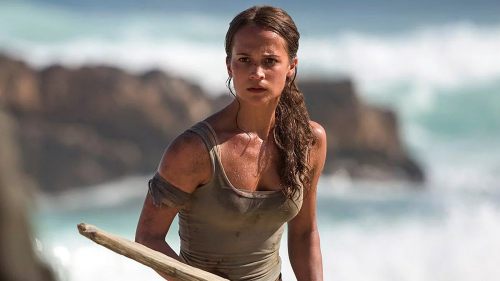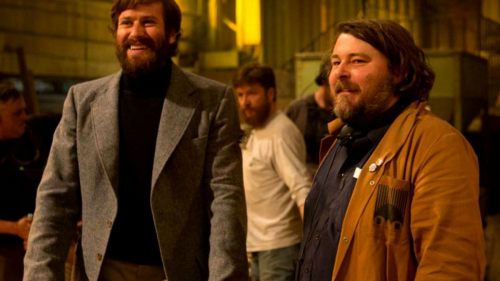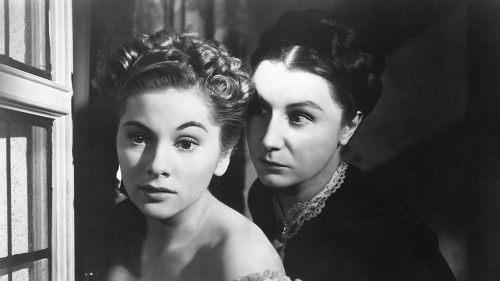Ben Wheatley And His Lovable Baddies
Free Fire is out now! Get your tickets here!
Ben Wheatley is not here for your fucking approval. Ever since he decided back in 2009 to make his first feature film Down Terrace with nothing but his own money and his friend Rob Hill’s apartment complex, director Wheatley has marched to the beat of his own drum, creating what he wants when he wants, without regard to anyone’s opinion on his plot points, and churning out impressive work at an exceedingly rapid pace. Ben loves to make films that are a bit off the beaten path, with stories that often don’t end happily, and characters who complete their arcs without having that one long-awaited moment of redemption, or as is the case in many Wheatley films, even surviving past the end credits. Wheatley revels in his shocking violence, finds his ammo in his odd couples, and delights in crafting villains who are as wicked as they are loveable.
Some filmmakers grow up telling the story of how their mom or dad raised them up making Super 8mm films (cough Steven Spielberg cough), but unfortunately, not all families have the time or resources to raise their children in such an encouraging environment. Ben Wheatley happens to fall into this category, which is why he found himself drawing pictures rather than shooting films at an early age, and perhaps also why it took him a little longer to find his footing in the cinematic world. Instead of heading off to film school like some of his future colleagues, Wheatley studied sculpture in school, and went on to pursue animation in viral advertising. It was around this time that he started hanging out with his buddy Rob Hill, and the two started making short films together and posting them online and getting feedback from other up-and-coming filmmakers. After getting over a million hits on their clever short “Cunning Stunt”, the pair became dead set on making a feature length film, but were fed up with waiting for producers to fund their project, or the B.F.I. to give them a chance. Instead of wasting time waiting around for someone to give them the greenlight, they took matters upon themselves to make it happen. With a few thousand dollars, a few non-trained actors, and Rob’s flat set as the primary location, the two secretly filmed a movie in a little over a week with plans to shelve the whole thing if it turned out terribly. This film was Down Terrace.
At first glance, it seems as though Down Terrace is just another crime film – just another story about trigger happy opposing gang members taking each other out, one by one, until their supposed police informant is revealed for the pig he is. However, upon closer inspection, it appears that Ben Wheatley has created a very honest and down to earth depiction of the quarrels that occur between family members who find it difficult to love each other sometimes, and the life of crime is merely a backdrop for the tumultuous relationships brewing between the people involved.
In the film, Karl and his father Bill are released from prison and immediately become obsessed with figuring out who snitched on them. Karl’s long time girlfriend Valda pops up and gives Karl a pregnant pause, as she waddles in through his front door and reveals a giant belly hiding underneath her dress. Bill tests Karl’s patience not only by commenting cruelly on his “bastard” son, but also dragging Karl’s mom Maggie into their fights, and you know, possibly even putting a contract out on Karl’s life. Soon it becomes clear that Karl can either continue to take what his dad’s dishing out, or he can take control of the situation in the only way he knows how – by ridding the familial unit of its rogue elements.
Two years later, hot off the unexpected success of his directorial debut, Wheatley came back again with a movie he was sure the critics would hate: Kill List. Another story about hit men, but one with an arguably even darker ending than its predecessor, Wheatley wasn’t out to make friends when he made this strange and surreal Wicker Man – esque piece of folk horror. Paired up on the writing and editing end with his partner in crime and wife Amy Jump (who he’s been dating since they were sixteen!), the duo set out to make a movie about hit men squaring off against satanic cult members, and boy did they deliver. Their tale about a man named Jay (Neil Maskell) forced back into the business by his unhappy spouse starts out as a transparent crime thriller, then quickly escalates into more fantastical, seedier territory, as each target on Jay and his partner Gal (Michael Smiley)’s kill list begins thanking their killers right before they lose consciousness. Already timid about dipping his toes back into a world of easy murder and easier money, Jay begins to unravel just a little bit more with each name they cross off on the list, until he goes completely mad and begins butchering his victims as opposed to aiming for clean kills. At one point, when the two are taking care of “The Librarian”, he even goes as far as to hammer the man’s entire body to pieces until he is unrecognizable, highlighting his raging insanity, and irritating his pal who knows him so well that he’s willing to put up with it, but he also recognizes a pattern and seeks to snuff it out before it gets any worse. Despite the fact that there is no romantic involvement whatsoever between the men, Jay and Gal are undoubtedly the couple in this movie, and as they fight to maintain peace between them while simultaneously attempting to stay level headed about their morbid line of work, it becomes clear to the audience that the only real reason why we’re so worried about the well being of these characters is because losing one of them would be so emotionally devastating to the other.
The very next year, in 2012, Wheatley was back again with yet another completed feature film, this one featuring two serial killers playing at romance. Starring Alice Lowe as Tina and Steve Oram as Chris, Sightseers actually isn’t that different from Kill List, as it features a couple going up and down the countryside and killing people as they see fit. Although Sightseers, which is more of a straight comedy, has a much more light hearted tone, both films toy around with the idea of morality, and how individuals come to define it in a way that justifies whatever actions they have committed. Just as Jay says to Gal in Kill List, “They’re bad people. They should suffer”, so, too, does Tina utter a similar line in Sightseers: “We don’t care about being fair, do we? We just care about being happy”.
Despite the fact that Tina and Chris are clearly murdering innocent people, it’s difficult not to find their characters likable because their disagreements feel so real and authentic. Sure, most couples don’t experience the stress that comes with killing random tourists, but the fact that Tina was so oppressed by her abusive mother for so long and thereby latched on to Chris and is mimicking all of his little idiosyncrasies is something that many everyday people have gone through first hand. Is Tina really a serial killer, or is she just copying her boyfriend to get his approval? Is Tina really enjoying snuffing out the lives of innocent civilians who piss her off, or is she just reveling in the newfound freedom that’s been showered down upon her? And with Tina taking on the title of Chris’ new muse, who has really been manipulating who from the beginning?
Slaughtering a man for littering on a train car may seem like an act that is completely unforgivable, but it’s the moments of kindness and levity that allow these characters to carry an entire film upon their shoulders and still retain an element of humanity that’s worth rooting for in the end. Chris and Tina may be bad guys, but they’re the sweetest little killer couple in all of Europe, and possibly the world.
Ben Wheatley’s favorite thing (besides bad guys of course) is improvisation. Wheatley creates a sense of realism, even in his most surreal environments, by allowing his actors to temporarily go off script and think on their feet. By giving his actors the opportunity to do what comes naturally, and removing as much exposition as humanly possible from the film, his characters feel less like made up figments of a writer’s imagination and more like real people that merely exist inside of this world at this given time.
Unfortunately, he wasn’t as able to permit his actors to improv dialogue in A Field in England as much as he was in Sightseers, simply because he had to make sure he stayed factually accurate to the time period of the 1600s, but he still used mainly comedic actors for his 2013 project, just as he did for his previous film, which gave them a sense of naturalism anyway because of their delivery. Shot in black and white, giving the audience little background and opening up with shots of booming explosions, A Field in England hits the ground running and only gets crazier as the runtime wears on. A man named Whitehead (Reece Shearsmith) is supposed to track down O’Neil (Michael Smiley) and bring him to justice, but of course the tables turn in the wide open vigilante environment, and soon Whitehead falls prey to dark potions and magic mushrooms, eventually slipping into a hallucinogenic trip which is expertly displayed by Wheatley’s decision to use fast cuts in the editing room. By overlapping several images and splicing them together so that one scene comes in every few frames over a different scene, he creates a psychedelic strobe effect that will make even the most sober viewer feel like they’re on drugs. It’s a really brilliant display, but according to Wheatley, he’s not the first to do it. The director sites an older influence in Sam Peckinpah, and points to the western filmmaker’s tendency to overlap cuts in his films, and combine them with slow motion to create alluring fight sequences that suck the viewer into a trance, as their brain is forced to process two different images all at once. It’s a riveting tactic, and one that Wheatley has undoubtedly mastered in his witchy middle-of-the-woods mind-bending seventeenth century meltdown movie. It’s ironic, too, that Wheatley sites Peckinpah’s direction as an inspiration, since the characters in Wheatley’s films eventually take on cowboy personas, from the way they dress, to the raw and impulsive old west style actions they commit.
Although Michael Smiley’s character O’Neil is undoubtedly a frightening man to go toe to toe with, his petrifying presence shifts from unsettling to surprisingly comedic as he eventually proves that just like Wheatley’s many other antagonists, he is pretty lousy at being bad. Jay in Kill List went off the rails and started viciously murdering whoever he felt deserved it, Tina in Sightseers latched on to her boyfriend’s violent tendencies and began killing all willy-nilly for the thrill of it, and O’Neil in A Field in England barks orders at the men he’s holding hostage, only to go nap in the tent, then come back out later and yell at whoever was left, demanding to know why his captives had taken off without his permission during his slumber. A big part of the reason why Wheatley’s villains feel so relatable is honestly just because they make mistakes. They’re human. They fall prey to emotions, just like the rest of us do, and so in their little moments of weakness we see their humanity and it helps us to forgive their bigger atrocities.
Wheatley says he got the idea for A Field in England from spending a lot of time traveling in trains and staring out the window, wondering what it would be like to shoot a movie in one of those little fields. He also has stated several times that he looked at the superhero heavy universe direction that cinema was headed in and decided that the time was now or never to make something a bit more intimate. Little did he know just how relevant his desire to stay small for a minute would become, when he himself would be tackling his biggest project yet just a few years later with the Tom Hiddleston led dystopian narrative High-Rise.
An adaptation of the J.G. Ballard book, High-Rise is often noted for its commentary on capitalism due to the poorer residents being placed on the bottom tiers of the tower while the upper class is positioned on the higher rungs of the building. Although a stance on capitalism is definitely being made with this movie, in actuality it’s really more about conformity, and rebelling against society’s demands for people to act what they deem to be “normal”. The Architect of the building, Royal (Jeremy Irons), hopes that the immaculate structure he has constructed will make the people living inside of it better than they were before they moved into the high-rise, and even Dr. Robert Laing (Tom Hiddleston), the building’s newest occupant, hopes that his new sanctuary will provide a much needed fresh start after the abrupt death of his sister. Still, neither man has anticipated people’s tendency to break out of their cages, and the more that the building demands its inhabitants fall in line and behave a certain way according to socioeconomic status, the more that its residents go against the norm and act in wild and outlandish ways simply so that they’re not doing as they’ve been told. Even the camera, handled by the always impressive and longtime Wheatley partner DP Laurie Rose, itself is in constant motion; contrasting with the stiff and rigid atmosphere of the stark white walls of the high-rise. There’s an air of freedom and bliss that comes with breaking the rules, but, as the occupants of this high-rise soon find out, it’s a slippery slope from carefree get-togethers down on into full on anarchy, and whether they like it or not, this party isn’t slowing to a halt anytime soon.
The character of Wilder (played by Luke Evans) is not only the most interesting character in the film because his lines of morality are so blurred with viewers’ expectations, but it’s also honestly the best performance in the entire film – and that’s saying something, especially given the amount of people involved in this project. Wilder is filming a documentary about the building, and catches everyone inside committing their most heinous acts on film, then projects them on the walls so that all may sit on them in judgment and no secret is kept sacred for long. Wilder cheats on his pregnant wife, leaves her alone for hours while miscreants vandalize the building, neglects his other children, crashes a pool party, repeatedly drinks until he’s sloppy and even rapes and beats up a female friend, but at one point in the film, Laing refers to him as the most sane person in the building. Although his actions are undoubtedly unforgivable, it’s worth noting that while the world around him tumbles into chaos, and people begin rioting and murdering at will and trading wives in for food, Wilder is the only character who speaks up about what’s going on and questions it…although by now, no one will listen. Even at his most horrible, Wilder still manages to retain a shred of empathy, due largely in part to Evans’ masterful performance, but also due to the fact that at the end of the day, plain and simple, Ben Wheatley just knows how to direct good bad guys.
His newest film, Free Fire, is no different. Taking a break from his grand gesture of a film High-Rise, Wheatley gets back to basics in a way that more closely resembles A Field In England with its small cast, confined location, and relatively simple plot. Two small teams of miscreants meet up in an abandoned warehouse to negotiate a trade: money for weapons. Although it should be a smooth and easy business deal, since everyone involved in the transaction is a bad guy, it’s safe to assume that things won’t be going smoothly for anyone. Before long, tensions are raised, a standoff is issued, and the whole place erupts in a cloud of smoke as gunfire fills the decrepit room and all patrons encased in the small enclosure are now caught in a shootout. Teams emerge and players switch sides, but it’s honestly hard not to love everyone involved, no matter what ill deeds they’ve done in the past (or in the near future) simply because of Wheatley’s tactics for making his monsters likable, which he has, by now, honed down to perfection.
Through improv, relying on talented comedic characters, cutting out as much exposition as possible, crafting realistic shocking violence, and usually shooting in chronological order, Wheatley creates an air of normalcy right in the middle of the eye of the storm. His relaxed style of filmmaking (while still being very much in charge of the situation) makes each moment feel more real, but his fondness for his villains bleeds through and permeates the screen in a way that’s easy for the audience to feel and absorb. Perhaps Wheatley sees himself in his characters, and slightly spares mercy on them, thereby inevitably painting them in a more sympathetic light than they would have been shown otherwise. Whatever the case, the fact remains that Ben Wheatley loves his bad guys, and by the way he depicts them, it’s hard for everyone else not to fall in love with them as well.



